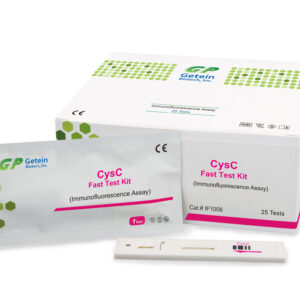Description
C-reactive protein is an acute-phase reactant that precipitated with Pneumococcal C-polysaccharide, and is a non-specific immune response component. CRP has wide distribution in our body, and is an acutephase protein produced in the liver in response to microbic infection or tissue injury, it measures general levels of inflammation in the body, and the hs-CRP can be used to detect lower concentrations of CRP in serum or plasma. Studies revealed hs-CRP levels seem to be correlated with Atherosclerosis and Acute Myocardial Infarction. And the hs-CRP is an inflammation “marker” for ACS patient and is helpful for primary prevention and risk assessment of cardiovascular disease. Its combination with the ratio of total cholesterol to HDL-C is more accurate than other risk factors in predicting cardiovascular disease.
The American Heart Association and US Centers for Disease Control and Prevention have advocated hs-CRP as a predictor of cardiovascular disease (CVD) to define risk groups: less than 1.0 mg/L indicates low risk, 1.0 to 3.0 mg/L means moderate risk, and the amount above 3.0 mg/L (lower than 10 mg/L) strongly suggests a high risk of CVD. Moreover, higher CRP levels are found in late pregnant women, mild inflammation and viral infections (10~40 mg/L), active inflammation, bacterial infection (40~200 mg/L), severe bacterial infections and burns (>200 mg/L).





